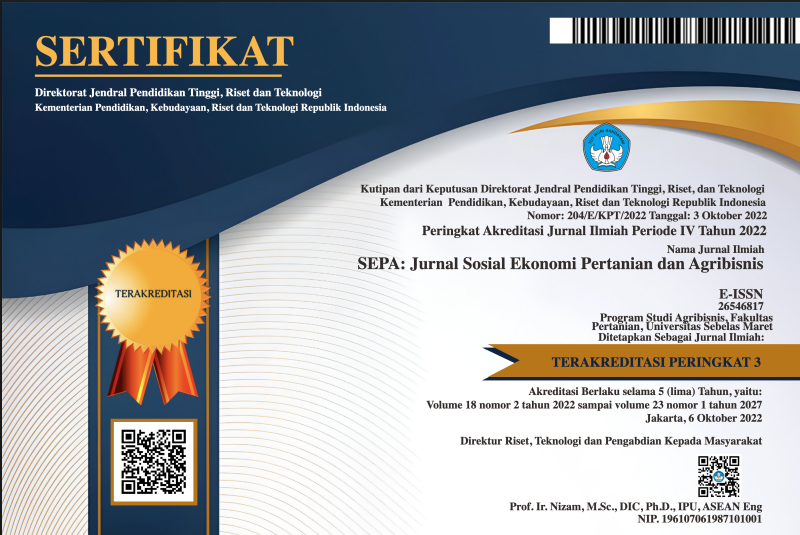TEKNIS-EKONOMIS PADI SAWAH IRIGASI UNTUK PENINGKATAN PENDAPATAN PETANI DI KABUPATEN NABIRE PAPUA
Abstract
Aim of this assessment is to study the behavior of farmers in the application of technology and to analyze irrigated rice paddy both input and output. Studies carried out in the center of irrigated lowland rice in Nabire, were doing the paddy rice farm implement at least two years. Primary data collection random proportionally in the form of a survey using questionnaires in April 2015 from the results of paddy rice cultivation MH (October/November 2014 and January/February 2015) as many as 43 farmers as respondents. Primary data includes cultivation technology, inputs and outputs. All data were tabulated and interprestation. Data were analyze in descriptive and quantitive way. The result showed that responses of farmers in this area depend on how the technology can improve paddy’s productivity and the farmers income. The dynamics of the response of farmers to increase productivity technology is relatively stable, especially in components commonly applied to farmers in the cultivation of paddy (how is the tillage, weeding and fertilizer application). Technology components that are sensitive to productivity and affect the income of such varieties and fertilizers used almost similar to recommendation. Productivity produced 4.92 tonnes / ha dry milled grain with a profit rate of Rp 11,588,600 million (B/C 1.89). Furthermore, it is necessary to study about the use of fertilizer, because fertilizer recommendation just based on Phoska forecasts.Moreover, there must be effort to convince farmers to use Legowo technique to improve paddy’s productivity. Scarcity of labor at planting and harvest need to be think in the future and also dissemination agricultural tools like (rice transplanter and a harvester/combine haevester) needs to be disseminated for farmers and stakeholders there.
Keywords
Technical; Economical; rice paddy.
Full Text:
PDFDOI: https://doi.org/10.20961/sepa.v12i1.14200
Refbacks
- There are currently no refbacks.
This work is licensed under a Creative Commons Attribution 4.0 International License.



.png)







.png)
3.png)





